What is a Circular Economy?
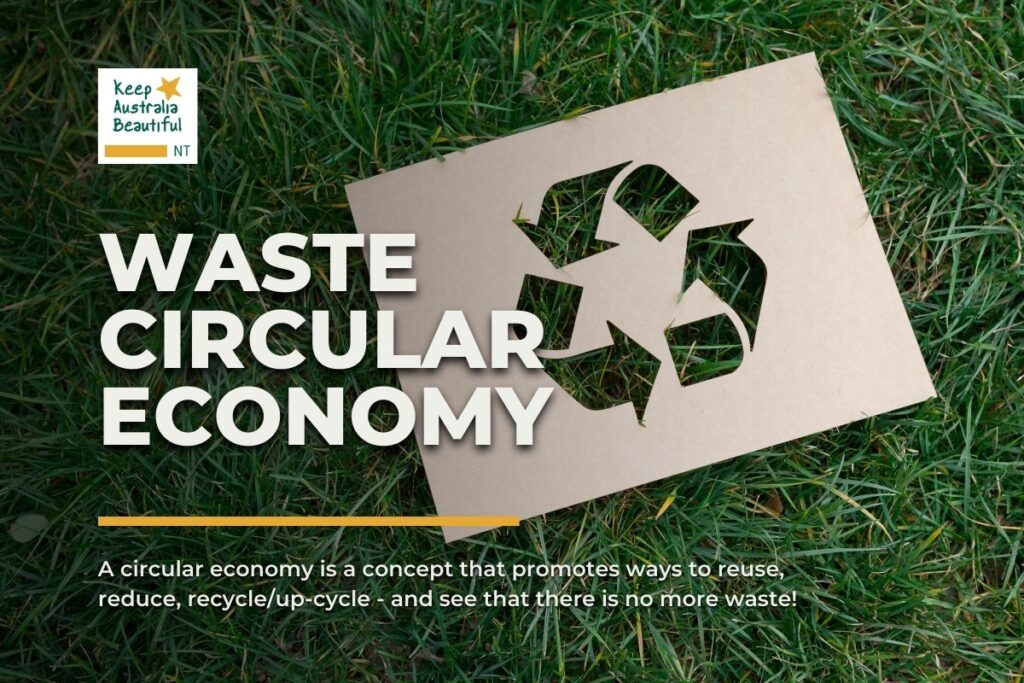
Circular economy is a new and emerging sustainability perspective, which is built on the natural world where there is no concept of waste and everything is a resource for the next level step in the cycle of dependence. It’s a concept that promotes ways to reuse, reduce, recycle/up-cycle – in other words, a circular economy!
The core idea of a circular economy is to see that there is no waste!
Imagine if the soft plastic from your bread bag was turned into new soft plastic when you recycled it through at your local shopping centre.
Imagine if all the materials could be recovered from the batteries you just dropped at your local battery recycling outlet , and nothing went to landfill.
Imagine if all your food waste was composted, and returned to the soil, to grow new food.
Imagine if the plastic butter tub could be turned into food grade plastic and used to make another butter tub.
This is what a circular economy would look like – materials going around and around forever.
We Currently have a Linear Economy
Over the years we have become accustomed to using a product and then disposing of it. This ‘Take, Make, Waste’ approach is referred to as a linear economy.
Basically, this means that we assume that the world has endless resources. We can use a product, throw it away, mine or grow some more materials, and make a new product.
Why is a Linear Economy bad?
There are two problems with a linear approach.
Some resources are becoming scarce. We cannot afford to throw these into landfill – we must extract and re-use the minerals.
The other problem is the impact of continuous extraction and dumping on our environment. Even best-practice mining uses land that could otherwise be left in its natural state. Clearing land for crops to manufacture clothes means there are less trees and less land for farming. Waste from city areas needs to be transported long distances to landfill sites. This uses significant amounts of energy and contributes to air pollution.
How to move to a Circular Economy
However, Circular economy is based on 3 main principles:
- “designing out” waste or simply rework the systems to not produce waste. This is achieved by design of product or services that are durable, uses recyclable material, and are repairable;
- separating the biological (residual resources that are non-toxic and can be safely returned to the biosphere often organic like paper and wood) from technical (unsuitable for biosphere systems like metals and plastics) nutrients where the former are returned back to the biosphere, and the latter are reused indefinitely. This requires our participation for example in the segregation of waste at home and composting green waste and putting other waste for recycling
- using renewable energy to decrease dependence on coal and other fossil fuels and reduce loss and vulnerabilities to failure by producing locally.
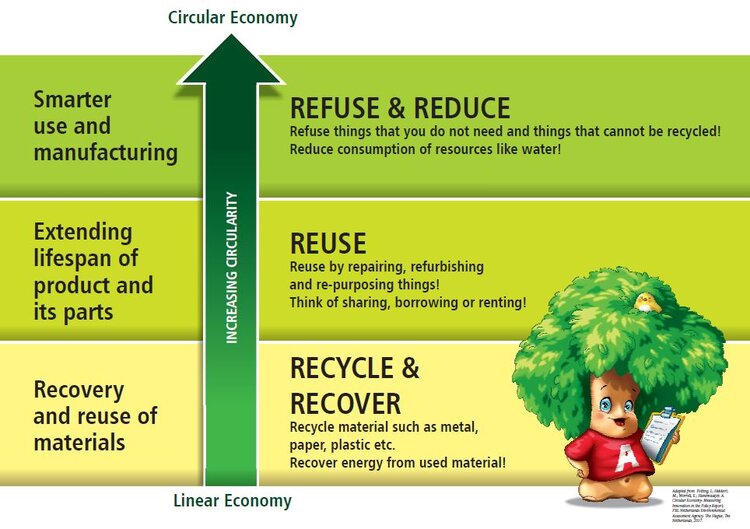
Let’s use paper as an example
Paper is an excellent example to see the strategies that can be adopted for increasing Circularity.
Remember – The core idea of a circular economy is to see that there is no waste!
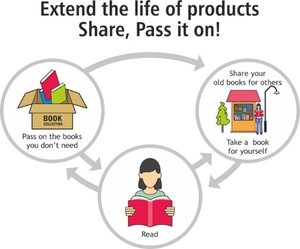
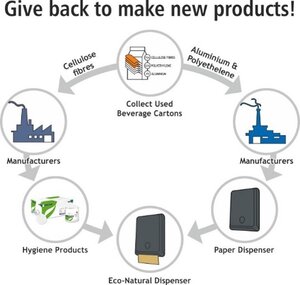
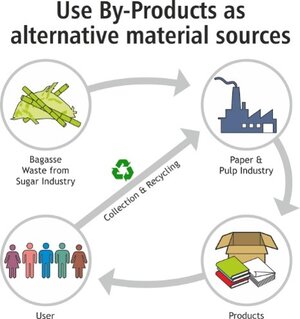
Resources
Further Reading:
- https://www.ecoschools.global/what-is-circular-economy
- https://www.cleanup.org.au/what-is-a-circular-economy